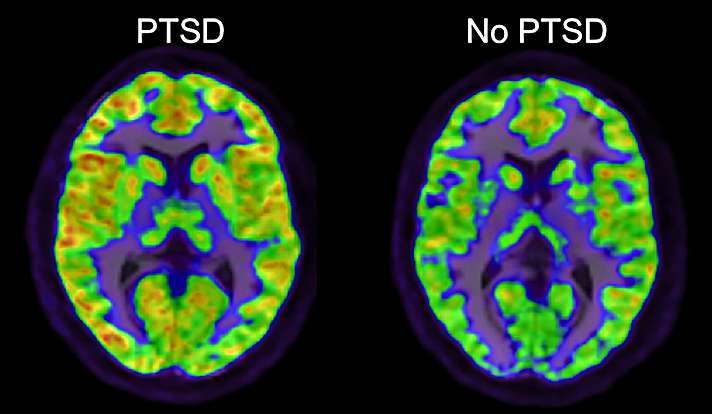Winner of the Fall 2018 StMU History Media Award for
Best Article in the Category of “Military History”
Best Article in the Category of “Science & Technology”
Charles Meyers, a Medical Officer, introduced the term “Shell Shock” to explain symptoms of Post Traumatic Stress Disorder (PTSD) displayed by military after combat in World War I (WWI). Soldiers often experienced symptoms including fatigue, tremor, confusion, nightmares, impaired sight, and impaired hearing. Meyers assumed that these symptoms were caused by the soldiers’ exposure to exploding shells, not necessarily the trauma they were witnessing or going through. In these years, symptoms of widespread PTSD were considered “weak” traits for soldiers by their colleagues and bosses. Even society as a whole started to view these symptoms negatively, which led to the destruction of their relationships after the Shell Shocked soldiers arrived home.1
Military gave Shell Shock victims no sympathy. When soldiers were dismissed from their duties, they were given labels such as “cowardice” or “emotionally weak.” These labels led to soldiers being targeted for abuse from their own side, as well as mock trials in which they were convicted. The pardons they received weren’t honorable, so they were often ashamed of their disorder, which led to more mental issues among the soldiers like depression, anxiety, and even suicide.2

New treatments flipped understandings of how World War I caused drastic changes in the behaviors of these men. Treatment for Shell Shocked victims before Arthur Hurst’s “miracle treatments” were very harsh, as they were often treated with Electroconvulsive Therapy, emotional deprivation, shaming, and solitary confinement. Some of the lesser treatments were hypnosis, massage, rest, and dietary treatments.3
Arthur Hurst primarily used occupational therapy to treat Shell Shocked patients, treating them as humanely and sympathetically as possible. This dignified care allowed for the increased numbers of “saved” soldiers, as they found ways to overcome the abuse and the labels given to them after their dishonorable discharges. Hurst’s treatments became iconic after the Newton Abbott’s Seale Hayne in Devon. Hurst’s approach allowed for 90% of Shell Shocked soldiers to be cured after only a single session.4

Modern day treatments, consist of therapy, as well as new medicines that aid in the control of the symptoms. According to Michael James, a pharmacist, there are Selective Serotonin Reuptake Inhibitors (SSRIs) that block the re-uptake of serotonin in the brain and help with sleep disorders, nightmares, and decreases intrusive thoughts. James also informed me that Serotonin Norepinephrine Reuptake Inhibitors (SNRIs) block the re-uptake of serotonin and norepinephrine in the brain which also decrease intrusive thoughts and provide aid for sleep disorders and nightmares.5
Hurst’s approach led to a change of heart and a consensus to the overall approach by society as a whole. Now, Veterans Affairs, also known as the VA, has a large program that provides aid to veterans with PTSD. However, this evolution of PTSD has not only been beneficial to veterans, but it has also allowed for a more diverse diagnosis of PTSD, in which it is more understood that other people, in addition to veterans, can also experience PTSD. PTSD can be caused from any sort of trauma including car accidents, violent crimes, and domestic violence. Individuals can even develop PTSD from having someone important abandon them as well. The DSM-5 has set a variety of symptoms for PTSD because just like any other disorder, it affects every individual differently. This document allows all individuals to gain access to the tools and help they need to recover from or live with PTSD.6

- Caroline Alexander, “The Shock of War,” Smithsonian Magazine, September 2010, https://www.smithsonianmag.com/history/the-shock-of-war-55376701/. ↵
- “Shell Shock,” BBC Inside Out, March 3, 2004, http://www.bbc.co.uk/insideout/extra/series-1/shell_shocked.shtml. ↵
- “Electroconvulsive Therapy: A History of Controversy, but Also of Help,” The Science Explorer, January 13, 2017, http://thescienceexplorer.com/brain-and-body/electroconvulsive-therapy-history-controversy-also-help; “Arthur Hurst: The Man Who Filmed Shell Shock,” BBC Radio 4, http://www.bbc.co.uk/programmes/articles/4VqPtrjsgcPKtgmYc2M5vXz/arthur-hurst-the-man-who-filmed-shell-shock. ↵
- “Arthur Hurst: The Man Who Filmed Shell Shock,” BBC Radio 4, http://www.bbc.co.uk/programmes/articles/4VqPtrjsgcPKtgmYc2M5vXz/arthur-hurst-the-man-who-filmed-shell-shock. ↵
- Email with Michael James, September 11, 2018. ↵
- Pete Walker, From Surviving to Thriving (Scotts Valley, CA: CreateSpace Independent Publishing Platform, 2013), 13-14. ↵



160 comments
Kathyleen Lauriano
Everyone knows about Post Traumatic Stress Disorder or in short PTSD. I cant believe that back then it was considered a “weakness” or “cowardice”. Its just not right. The fact that they were treated horribly if they were diagnosed with PTSD is sad. I like how eventually they started being more sympathetic about the issue and started helping them more. This article gave great detail on the disorder and how it started. Good Job!
Diego Aguilera
Really great article to learn more about the brain and PTSD. i like the focus choice as this could be a broad topic. I enjoyed the descriptive and in depth paragraphs with the cool photos in the article. I like the comparisons made from back to World War 1 to now. I would myself do more research to see also what happens in the NFL and compare them. I love the descriptive paragraphs as it kept me engaged.
Clarissa Gonzalez
I had been in ROTC for all four years in high school, so they people I was involved with all had experience with PTSD, whether it was their family or friends. It’s a serious disorder from a serious problem, that to be completely honest, isn’t given enough attention to. So many veterans struggle with their everyday lives after serving our country, and have nothing to show for it. To imagine that it was worse in the last century, I just couldn’t.
Alexis Martinez
I loved this article! My grandfather was a veteran and he suffered from PTSD so reading this article really made me think about him . This article did a great job explaining the history, treatments, and the perception in society. When my grandfather came back from the war it was very hard for him to return to mundane tasks and after reading this I’m glad I have a better understanding of the things he went through.
Sebastian Carnero
I knew about shell shock, but I didn’t know about this treatment, neither that it had a success rate as high as 90%. It is a shame how the military tagged these soldiers as “weak” after everything these people went through, some of them who probably never thought about becoming a soldier or going to war. It is good to know there was someone who cared about helping them and also that the treatment was sympathetical.
Maggie Amador
It’s a shame to see that soldiers with mental illnesses were being overlooked and called weak. It’s also alarming to think that some soldiers were living with PTSD because they were afraid to come forward. I wonder what motivated Arthur Hurst to treat these soldiers, and what led him to believe in an illness you can’t see.
Caden Floyd
No one should be ashamed or shunned because they suffer from PTSD. They fight for us and keep our nation free so they should be treated with the upmost respect. I like the part of the story when soldiers started to get treatment for PTDS and their sane lives were saved. I had no idea it was that big of a deal in the older times, but this article really emphasizes and describes the hardships of post war traumas. The pictures in this article are also help understand how primitive their treatment was.
Aneesa Zubair
I loved reading about the developments made in psychology that allowed soldiers with PTSD to get the treatment they needed. It’s terrible when people misunderstand mental illness and see it as a weakness or “cowardice.” This would especially be common in the military where soldiers are expected to be tough and fearless despite the horror they face in combat. By making developments in occupational therapy, Hurst helped not only soldiers, but many more civilians faced with mental illness as well. Thanks to his innovations, mental health treatments have evolved to become more effective, safe, and humane.
Valeria Perez
As a person living in 2018, I can’t believe that a few decades back PTSD was considered a weakness, something to be ashamed of. How could society treat the soldiers in this way after they had just come back from seeing the horrors of war? I am happy we have now adjusted out attitudes and treatments to treat this disorder.
Luisa Ortiz
What a great article! Many of us we know or heard about Post Traumatic Stress Disorder or by its initials PTSD, but what I was not aware of the history behind it, the treatments etc ! I’m glad there is an article that talks about the story of such illness, I believe that creates awareness. Also, I like how the writer of this articles goes to the point yet it has details. The pictures are very good and goes well with the article, good job!